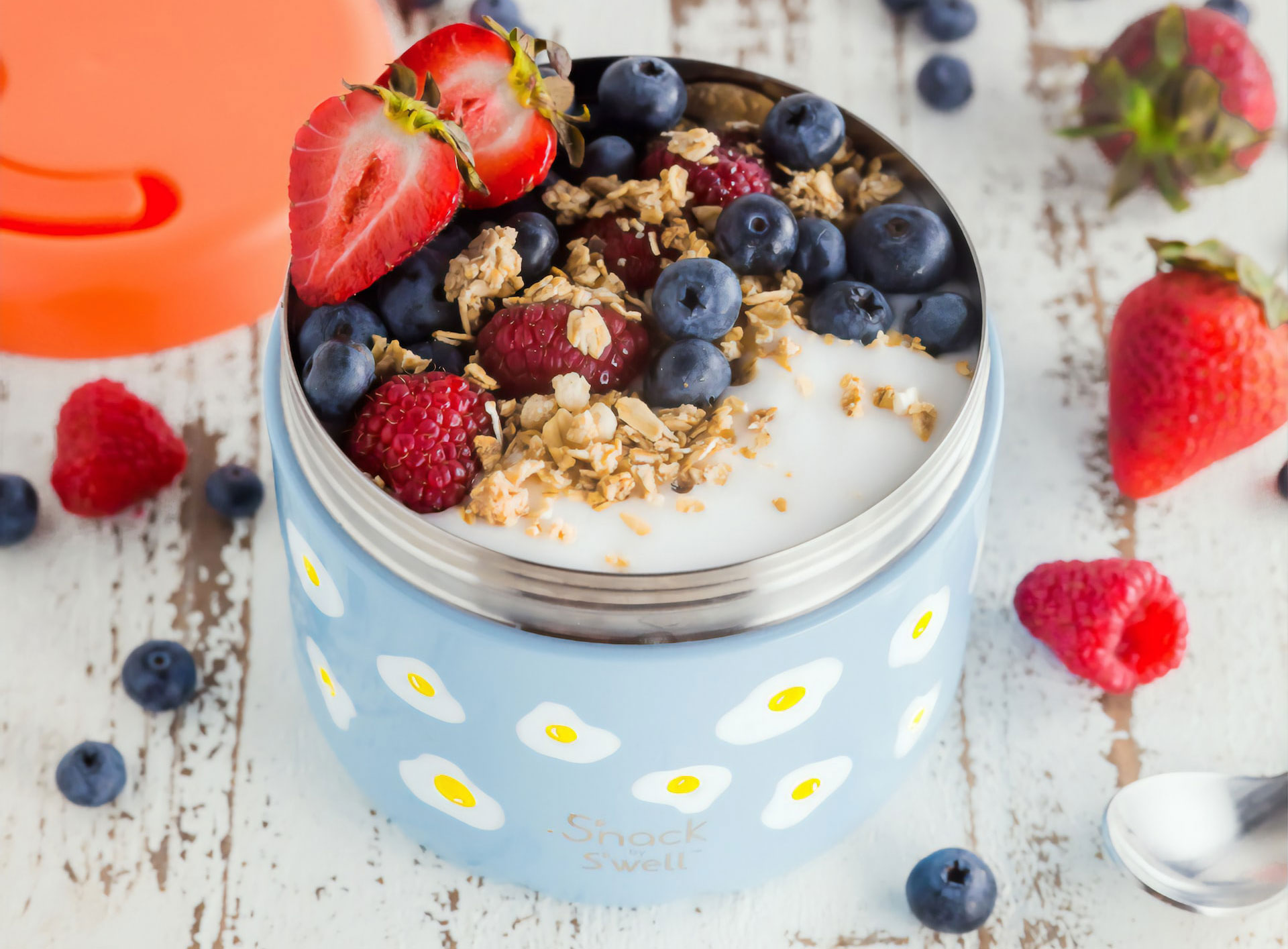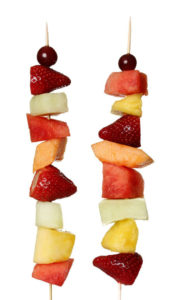
Sheila Beckley is a CSU Extension Family and Consumer Science Extension Agent based in Weld County. These tips first appeared in Extension’s Family Matters newsletter.

As a mom of a first grader, I understand the challenge of always coming up with appealing snack and lunch ideas. My child has a wide range of foods he likes, but he gets tired of foods very quickly. More than anything, he likes variety and novelty. However, some parents may experience the opposite challenge. Some children prefer a limited variety and are hesitant to try new foods. To help your child accept and enjoy a variety of foods and to be sure they are getting the nutrition they need, consider these tips for planning and preparing your child’s lunch and snack.
Encourage your child to help
From planning, grocery shopping, to preparing their meals, children will appreciate the food better if they have a hand in the process. It will also help them to learn independence
How to talk to children about healthy eating
When children are helping, find out what they know about healthy eating. Ask them questions. Listen to their answers. Gently correct any misunderstandings.
Explain that foods from each of the food groups (fruits, vegetables, grains, protein and dairy or fortified alternatives) provide their body with a different mix of nutrients that keep their body working well. Talk about the importance of eating a variety of foods each day. Make it clear that good food helps them grow and gives them energy to run, play and learn. For more information about specific foods and their serving sizes, visit the MyPlate.gov.
Make healthy food choices
- Create snack stations
- Create snack stations in the cabinet or in the refrigerator made up of healthy snacks such as whole fruits, cut veggies, granola bars, cheese sticks, yogurt cups, or whole grain crackers. Allow your child to pick from the selection.
- Always check the label on packaged items
- Choose snacks that have more vitamins and minerals and at least 2 grams of fiber per serving.
- Limit snacks that have more than 10% daily value of saturated fat, sodium and added sugars per serving.
- Add veggies and nuts!
- Include a total of two to three vegetables or fruits in their lunch and snacks daily, and switch it up to include a variety of options during the week.
- Add nuts to snacks or lunch for protein, fiber, and healthy fat.
- Pick healthy alternatives
- Choose healthy dips for vegetable sticks such as peanut butter, guacamole, or hummus.
- Swap out chips for lightly salted popcorn.
- Encourage your child to drink water or milk most of the time rather than juice or sweetened beverages.
- Prevent sandwiches from getting soggy or drying out
- Do not place wet ingredients such as tomato slices against the bread. Instead, place a cheese slice or dry lettuce leaf against the bread. A spread like mayonnaise, margarine or hummus can also prevent the bread from getting soggy.
- Place the sandwich in a sealed sandwich bag or a reusable food container to keep the bread from drying out.
- Learn more!
- Watch a demonstration on packing a lunch box and several sandwich recipe ideas in this video from the High Plains Library District.
Keep your child’s lunches and snacks safe
- Always wash fruits and vegetables thoroughly under running water
- Drain and pat dry fruits and vegetables well before packing.
- Keep food out of the temperature danger zone (40o – 140°F) where harmful bacteria grow
- Use two freezer gel packs, around 4 x 6 inches, and an insulated lunch bag to keep foods cool and food safe. As an alternative to a freezer gel pack, you can also use a frozen: 100% fruit juice box (no sugar added), water bottle or frozen fruit cup (no sugar added)
- If you’re packing hot food, use an insulated food container. Pour boiling water into the container, put the lid on, let stand for a few minutes, empty it out, then put in the piping hot food. Tell your child not to open the container until lunch time to keep it above 140°F.

Jaci Wagner is a CSU Extension Family and Consumer Sciences Extension Agent based in Logan County. These tips first appeared on Extension’s Live Smart blog.
Plan ahead

When planning and preparing ahead of time, undue stress on a busy morning and poor food choices are often deflected when a plan is in place. It is a good practice to start getting in the habit of cutting up your fruits or vegetables the night before or at the beginning of the week and separate into individual, easy to grab containers. Then, when it is a busy morning, a healthy snack/lunch choice is easy and already prepared. Not only can this be with fruits and veggies but is easy to do with other snack options like pretzels, popcorn, or crackers so they can be easily added to lunches.
Get creative with easy recipes
A packaged lunch from home doesn’t have to be a boring sandwich! There are so many fun and innovative recipes that make it easy to mix it up and not become burnt out on packing a lunch each day. Try a tortilla or lettuce wrap around your protein of choice instead of bread, or even make a meat and cheese skewer. Basic yogurt can easily be spiced up with some fruit and granola added in a small mason jar for easy travel. Here are a few ideas:
- Cucumber Tomato Salad – An easy addition to a lunch any time of year with fresh vegetables.
- Individual Fruit Crisp – Add a sweet treat to your lunch, while still getting in some fruit and oats!
- Mini Cucumber Sandwiches – A refreshing spin to a typical turkey sandwich but still convenient and tasty!
You can even make this a family project! When our kids become involved in the process, they are more likely to eat the healthy lunch. Allow the kids to use cookie cutters to make their sandwich a fun shape every once in awhile. Fruit kabobs seem way more fun that ordinary fruit slices in a plastic bag too! Let the kids help by using a melon baller and putting on a skewer to take part in the prepping and planning. They can be your assistant in the kitchen, washing items and putting tools away as well as packaging in bags. The whole family is invested and feels included and can then help with the menu planning as well.
Find variety in core food groups
It’s important to include all food groups when packing our lunches. Mixing the forms of these food groups will help keep the menu interesting too.
- Fruits and vegetables: fresh, frozen, dried, or canned
- Protein: deli meat, hard boiled eggs, baked or grilled chicken, beans, nut butters, tofu
- Dairy: dairy or nondairy milk, cottage cheese, yogurt, cheese,
- Grains: whole wheat bread, tortilla wraps, pasta, pita, crackers
Make a budget
If a lunch plan isn’t in place, it is easy to run and ‘grab’ lunch from a nearby restaurant. Bringing a lunch can also help stretch a monthly budget. Prepare leftovers in small manageable containers and reheat at the office the next day. At first, the grocery store bill may seem larger than previous trips. However by not eating out each day, you will notice a savings on the other end of the checkbook.
Whether you are planning for yourself or your family, packing a lunch for work or school doesn’t need to be a daunting task. It can be enjoyable and a good habit to start!